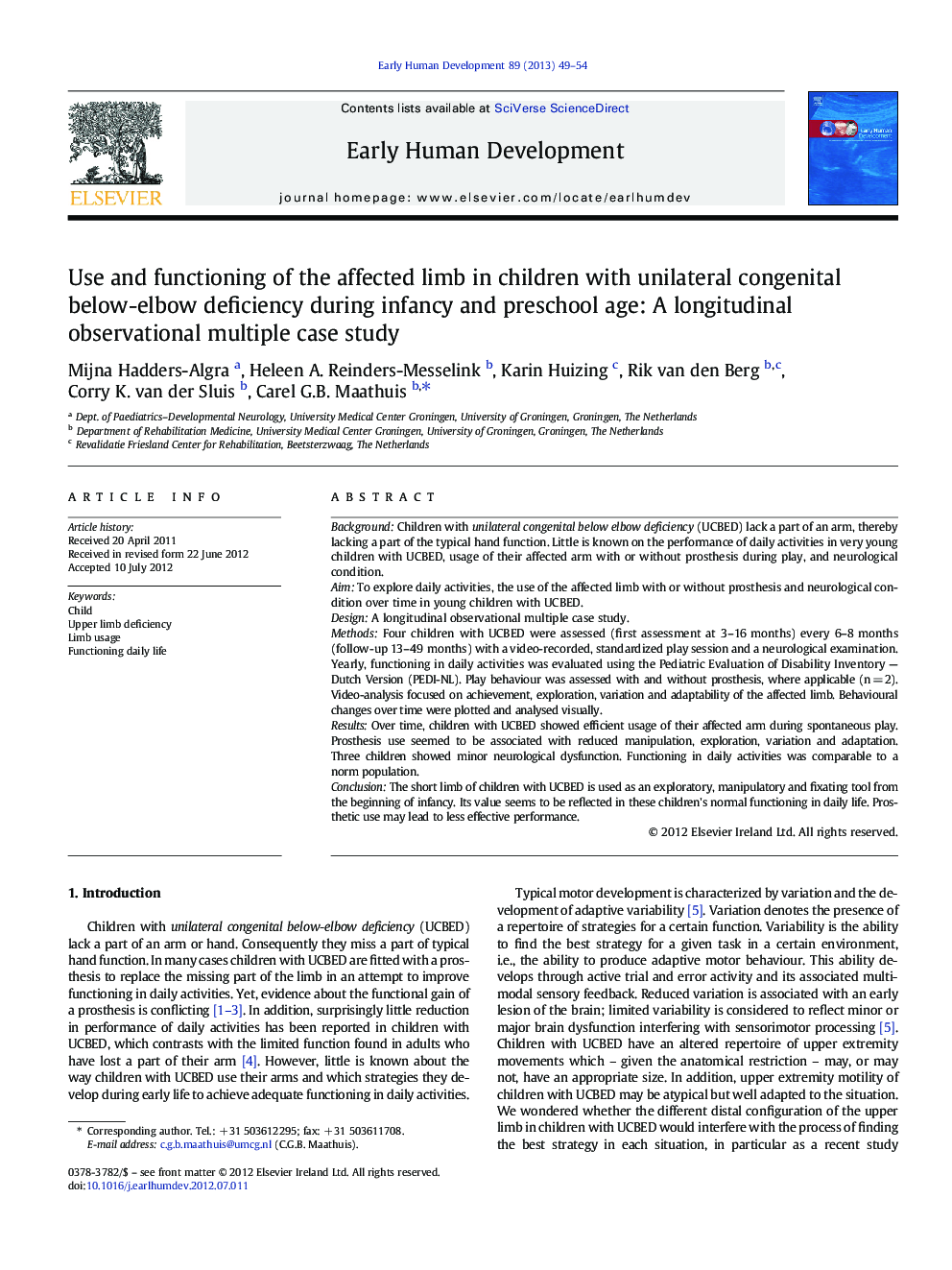| Article ID | Journal | Published Year | Pages | File Type |
|---|---|---|---|---|
| 3916875 | Early Human Development | 2013 | 6 Pages |
BackgroundChildren with unilateral congenital below elbow deficiency (UCBED) lack a part of an arm, thereby lacking a part of the typical hand function. Little is known on the performance of daily activities in very young children with UCBED, usage of their affected arm with or without prosthesis during play, and neurological condition.AimTo explore daily activities, the use of the affected limb with or without prosthesis and neurological condition over time in young children with UCBED.DesignA longitudinal observational multiple case study.MethodsFour children with UCBED were assessed (first assessment at 3–16 months) every 6–8 months (follow-up 13–49 months) with a video-recorded, standardized play session and a neurological examination. Yearly, functioning in daily activities was evaluated using the Pediatric Evaluation of Disability Inventory — Dutch Version (PEDI-NL). Play behaviour was assessed with and without prosthesis, where applicable (n = 2). Video-analysis focused on achievement, exploration, variation and adaptability of the affected limb. Behavioural changes over time were plotted and analysed visually.ResultsOver time, children with UCBED showed efficient usage of their affected arm during spontaneous play. Prosthesis use seemed to be associated with reduced manipulation, exploration, variation and adaptation. Three children showed minor neurological dysfunction. Functioning in daily activities was comparable to a norm population.ConclusionThe short limb of children with UCBED is used as an exploratory, manipulatory and fixating tool from the beginning of infancy. Its value seems to be reflected in these children's normal functioning in daily life. Prosthetic use may lead to less effective performance.
